Yes, most long-term datasets show Mountain Bluebird population declines. But are population numbers truly changing - or are we just getting better at noticing them? Recent data from eBird, NestWatch and Breeding Bird Surveys suggest significant changes. Explore current research, habitat concerns and how citizen scientists are helping track trends - discover what we know, what we don’t and how you can get involved!
Photography plays a powerful role in bluebird conservation. Thanks to the stunning contributions of photographer Martin Hensel, our gallery at bluebirdtrails.org/photos continues to grow. Share your own photos of Mountain Bluebirds, prairie wildlife, and nest box activity to inspire others and support conservation in southern Alberta.
MBTCS’s 2024 website soared with a 36% traffic boost. Our top articles showcased Mountain Bluebird migration, nest box building, and volunteer resources; pus we engaged readers across North America! Read more about how our website helps to support Mountain Bluebirds conservation by sharing tips and connecting our community through insights for an impactful 2025!
The Lethbridge Christmas Bird Count 2024 brought together 80 dedicated participants who tallied an impressive 55 bird species and 31,020 individual birds across the city and surrounding areas. Highlights included new records for Western Meadowlark, American Dipper, and Northern Saw-whet Owl, along with high counts for Mallards, Downy Woodpeckers, and Northern Shrikes.
Discover how the Mountain Bluebird Trails Conservation Society (MBTCS) is enhancing conservation efforts for Mountain Bluebirds by integrating the NestWatch app into trail monitoring—empowering trail monitors and bird enthusiasts alike.
The Mountain Bluebird, facing threats from habitat destruction and invasive species, found a champion in Duncan Mackintosh and the budding community of conservationists he inspired. This marked the beginning of the Mountain Bluebird Trails, an initiative rooted deeply in community effort and ecological stewardship.
Check out video of the Mountain Bluebird Trails Conservation Society’s 50th anniversary milestone Annual General Meeting held on Saturday April 6, 2024, at the Helen Schuler Nature Centre in Lethbridge, Alberta.
As part of our Annual General Meeting we are happy to share updates from the Nature Conservancy of Canada (NCC). We are happy to have several videos of their current initiatives and programs in areas that bluebirds habituate.
If you love birds, then you are likely looking for ways to help birds thrive! Citizen science is a great way to help improve our understanding of birds.
We are thrilled to share a video from Myrna Pearman’s YouTube channel - specifically this great overview of the Mountain Bluebird Trail Monitoring Guide!
Explore highlights from our website’s statistics from 2022! Discover how many visitors explore our website and where they came from. Leave a comment to help us plan our 2023 content.
Mountain Bluebirds (Sialia currucoides) are an absolute delight during the early spring and summer in Southern Alberta. When they quickly disappear in September it is clear that the seasons are changing, and autumn has arrived. Where do the Mountain Bluebirds go when they leave Alberta?
Western bluebird numbers appear to be increasing in southwestern Alberta, which suggests they are expanding their range. As they expand, low starting numbers may force them to breed with the more abundant mountain bluebird and produce hybrids… To ensure we don’t miss any sample opportunities, we need the help of citizen scientists and bird enthusiasts from within the community.
Explore highlights from our website’s statistics from 2021! Discover how many visitors explore our website and where they came from. Leave a comment to help us plan our 2022 content.
In the last 30 years of monitoring of the Carol Porter Trail there have been three seasons with low numbers of bluebirds fledged: 2002, 2009, and 2021. The weather appears to be the main factor in the number of bluebirds fledged.
As our 50th anniversary approaches we are asking for you to share your stories, photos, and history of the Mountain Bluebird Trails Conservation Society! Help us document our history and the impact over the years.
Spacing is one of several factors to consider when you install a new nest box. The right spacing will help you maximize occupancy for Bluebirds while minimizing other occupants. It also enhances the habitat’s available resources, giving the Mountain Bluebirds who raise their young in the nest box with the best chance of success!
Placement is one of several factors to consider when you install a new nest box. Where you put the nest box will help you minimize repairs or the need for replacement. It will also help provide the Mountain Bluebirds who raise their young in the nest box with the best chance of success!
Thank you to all Bluebird enthusiasts for increasing our collective knowledge about these wonderful animals. Below is a select bibliography for this website. These references will help you to take your study of Mountain Bluebirds (Sialia currucoides) to the next level. Please let us know about other great resources we can add to this page!
In November 2017 I installed 21 new nest boxes on the Birds Eye Ranch east of Waterton Park. The land owners have seen bluebirds in the area but there have not been any nest boxes in the area for many years. Ten of the boxes were new plywood, 11 of the boxes were painted grey.
Recruiting monitors is an ongoing requirement to maintain the trails and keep the nest boxes in usable condition for bluebird nesting. Proximity to the mountains, recreational areas and parks provides a draw, bringing people to the foothills for recreational activities. Monitoring a bluebird trail can be one of the activities that people and families engage in when they are in bluebird habitat.
The fly larvae that feed on the young bluebirds are common flies. I collected a number of the larvae and pupae from bluebird nest boxes this summer and put them in a jar. Then I left them for a couple weeks until the adults emerged from their cocoons, and what came out? Common flies, nothing special, just the everyday flies you see everywhere in fields and around cattle.
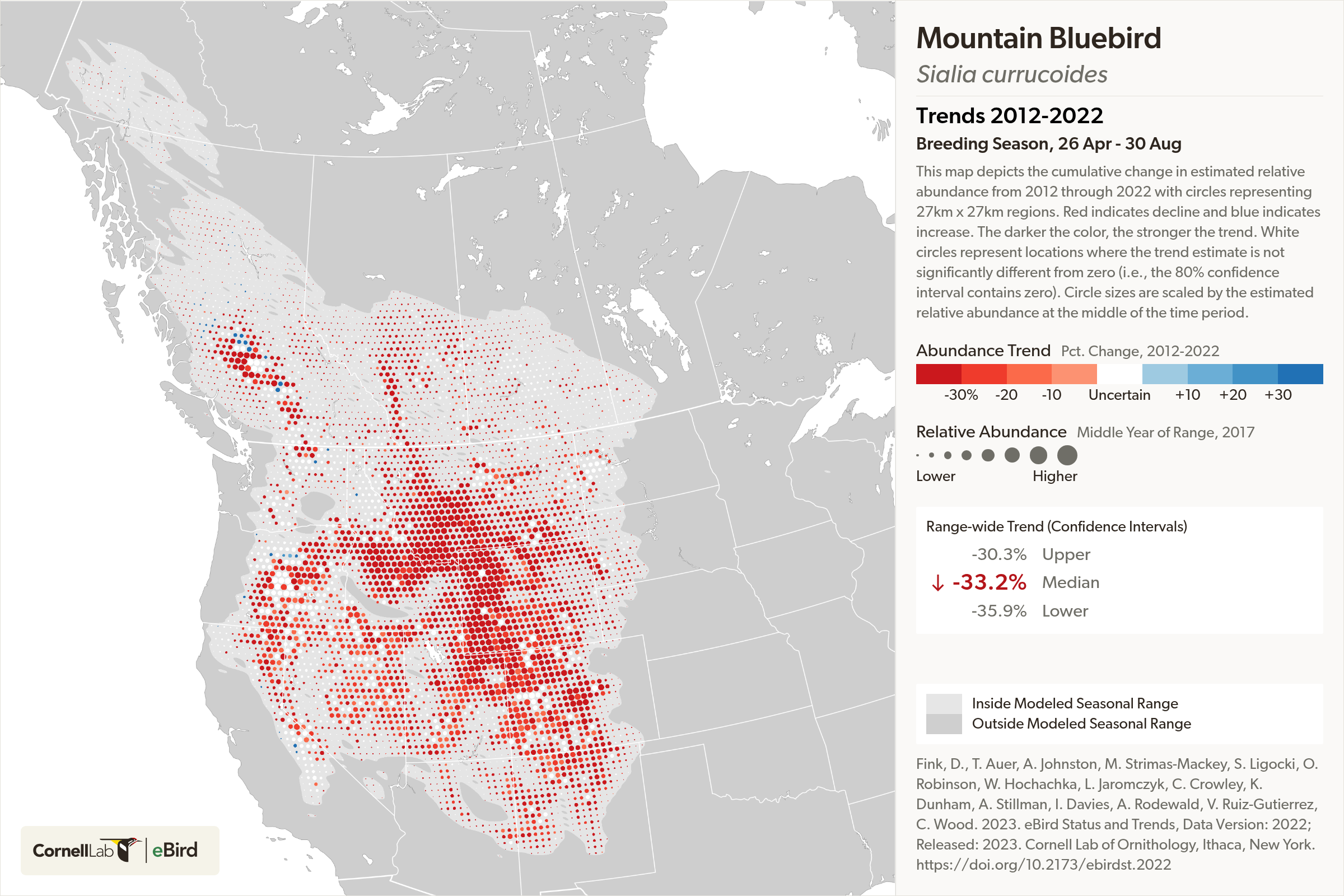
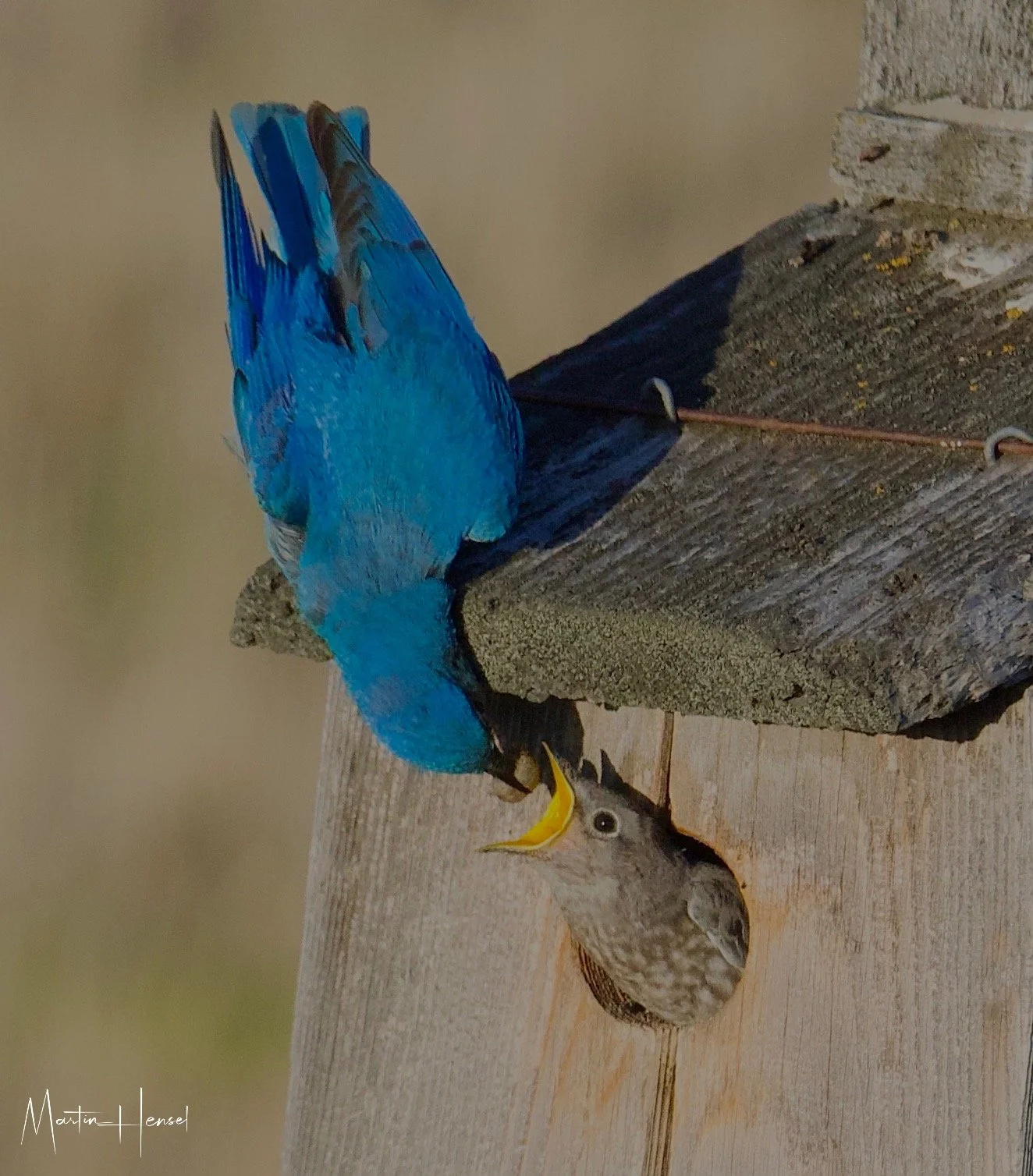



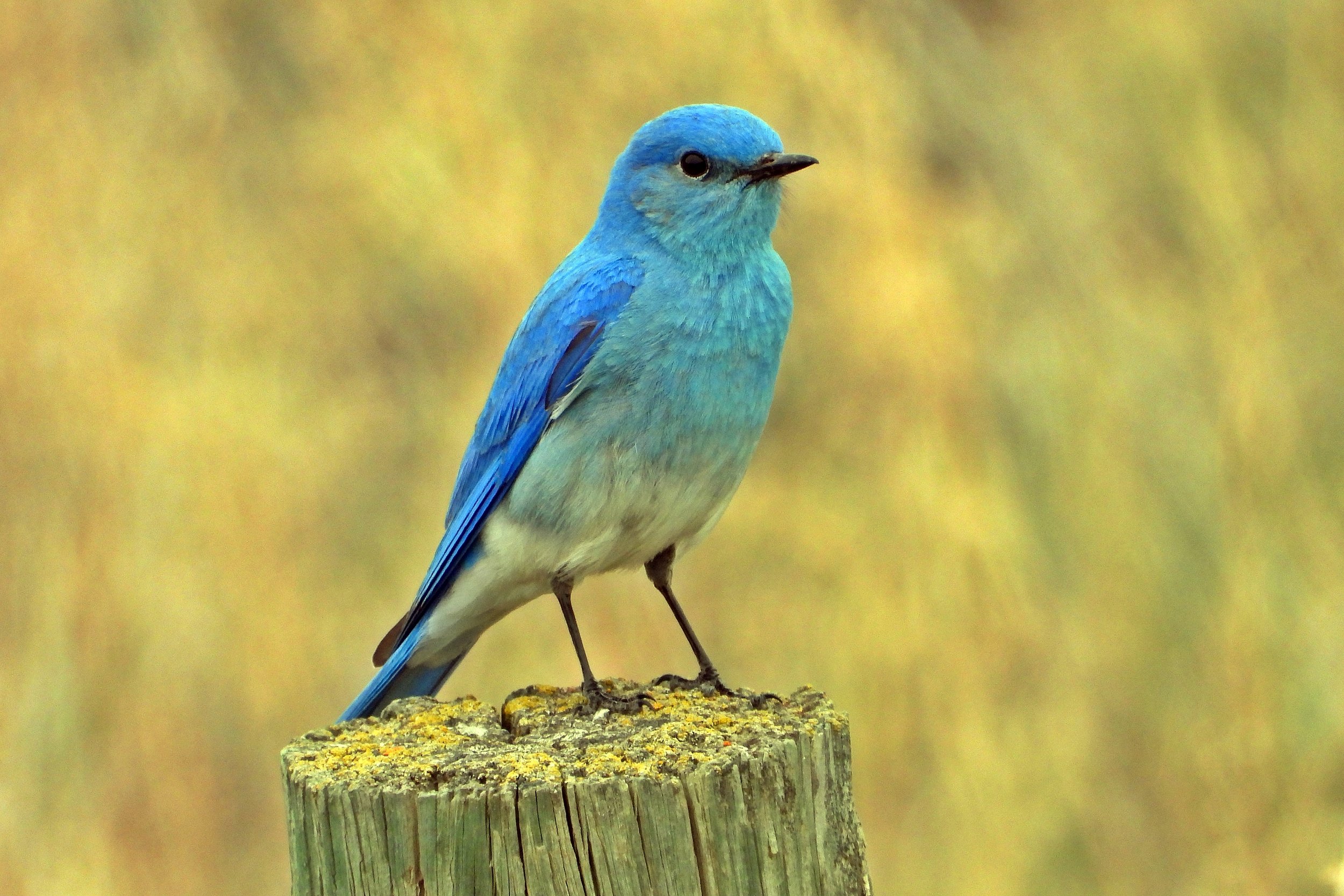





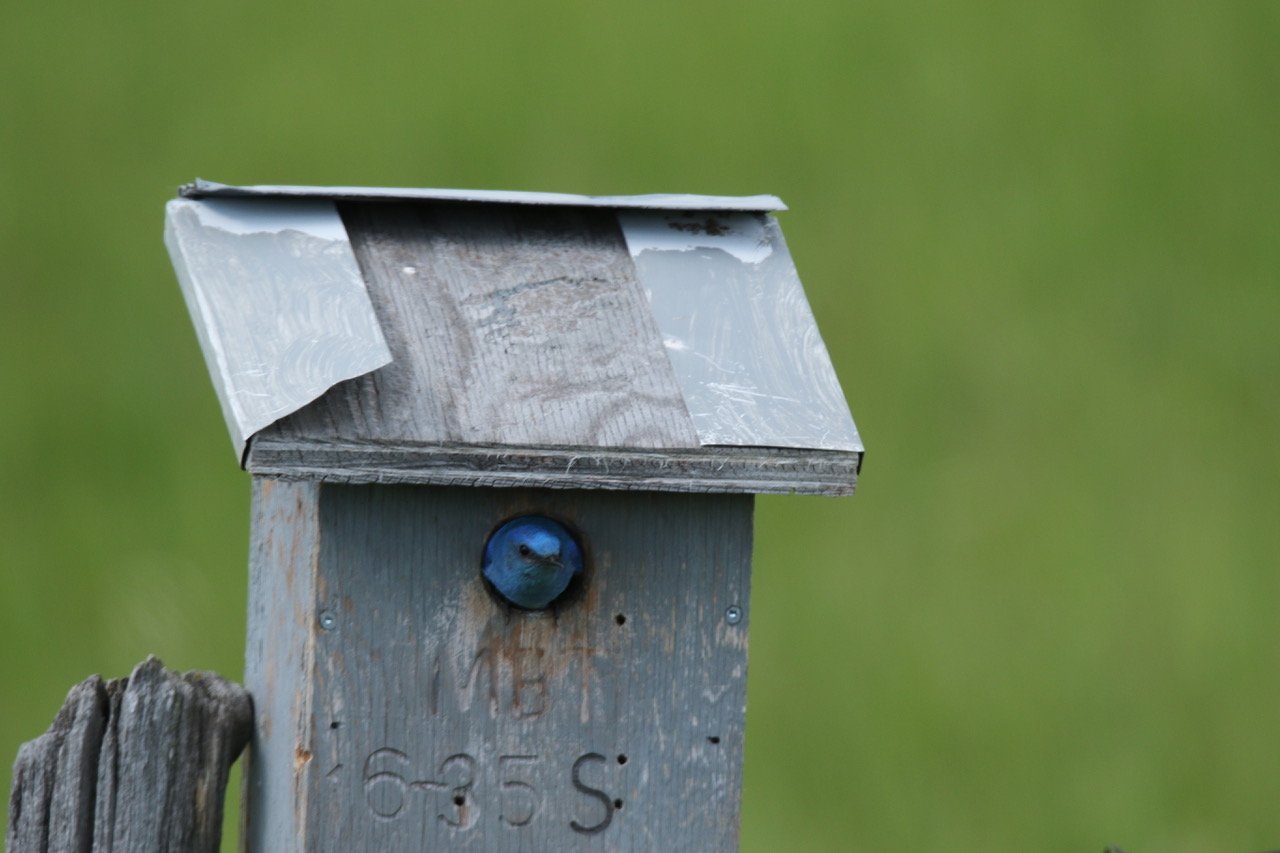


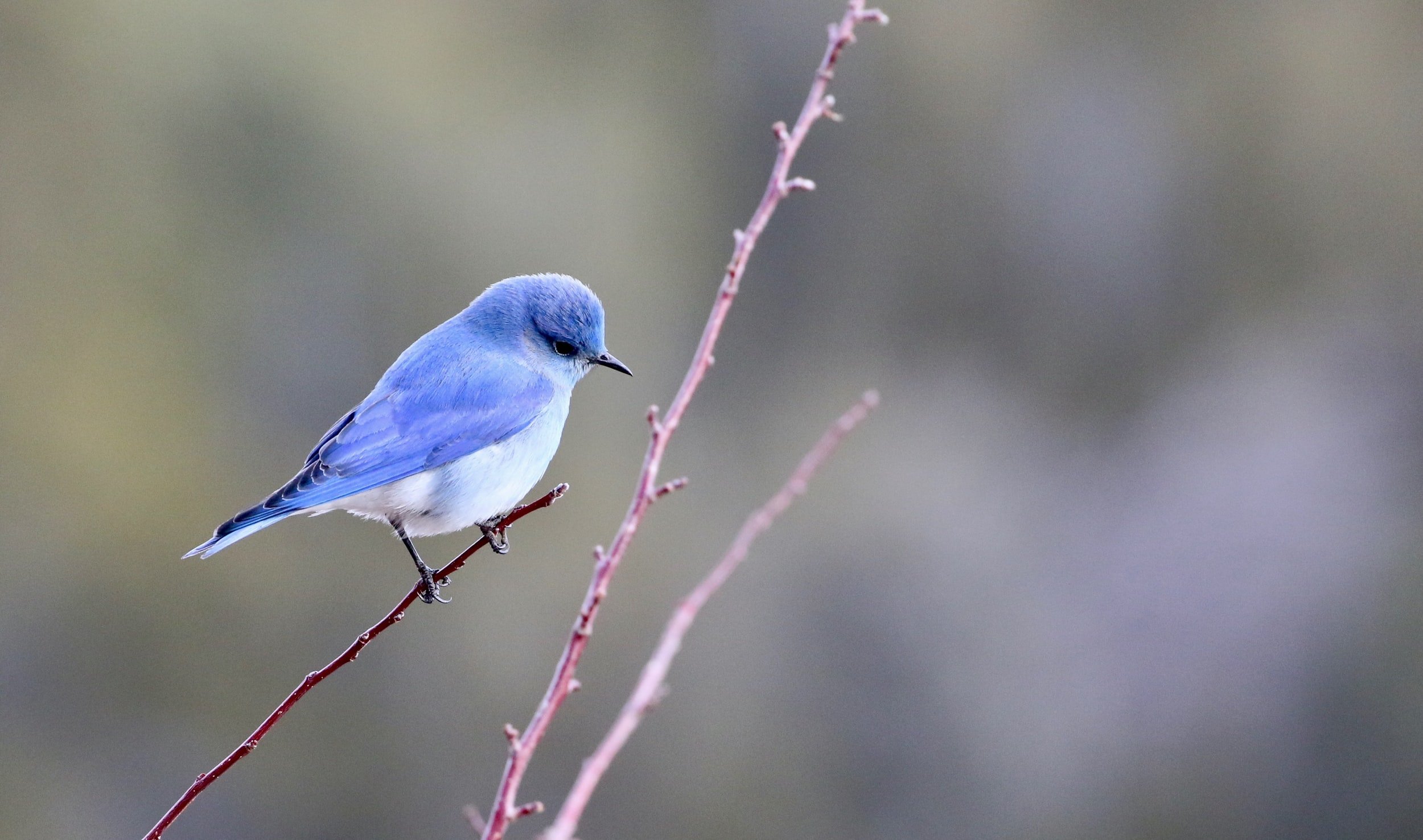
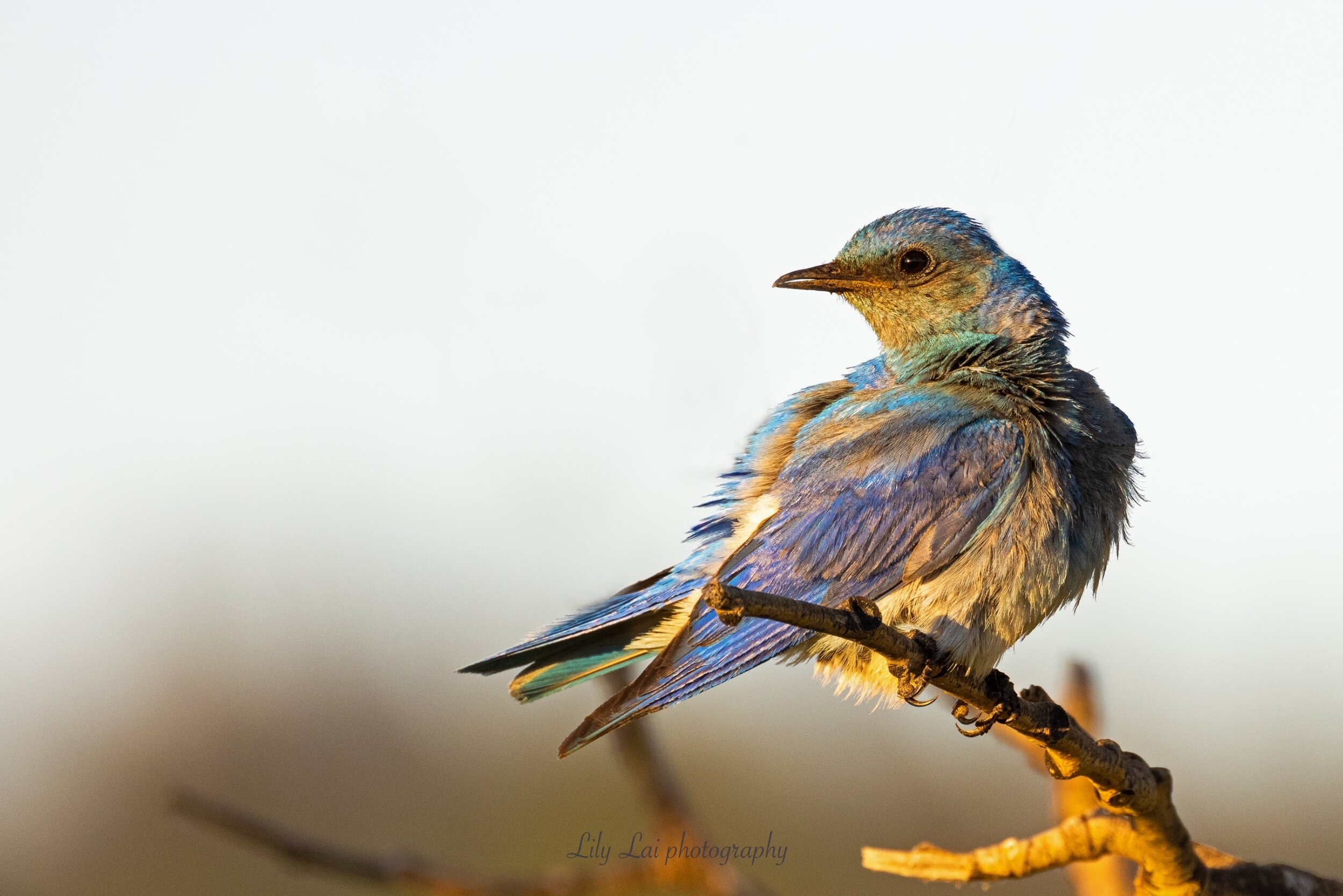







Northeast of Coaldale, the Skull Springs Trail is a living legacy. Joe Michielsen’s 25 years of care fledged 1,400+ bluebirds, showing how nest boxes restore habitat and inspire stewardship.